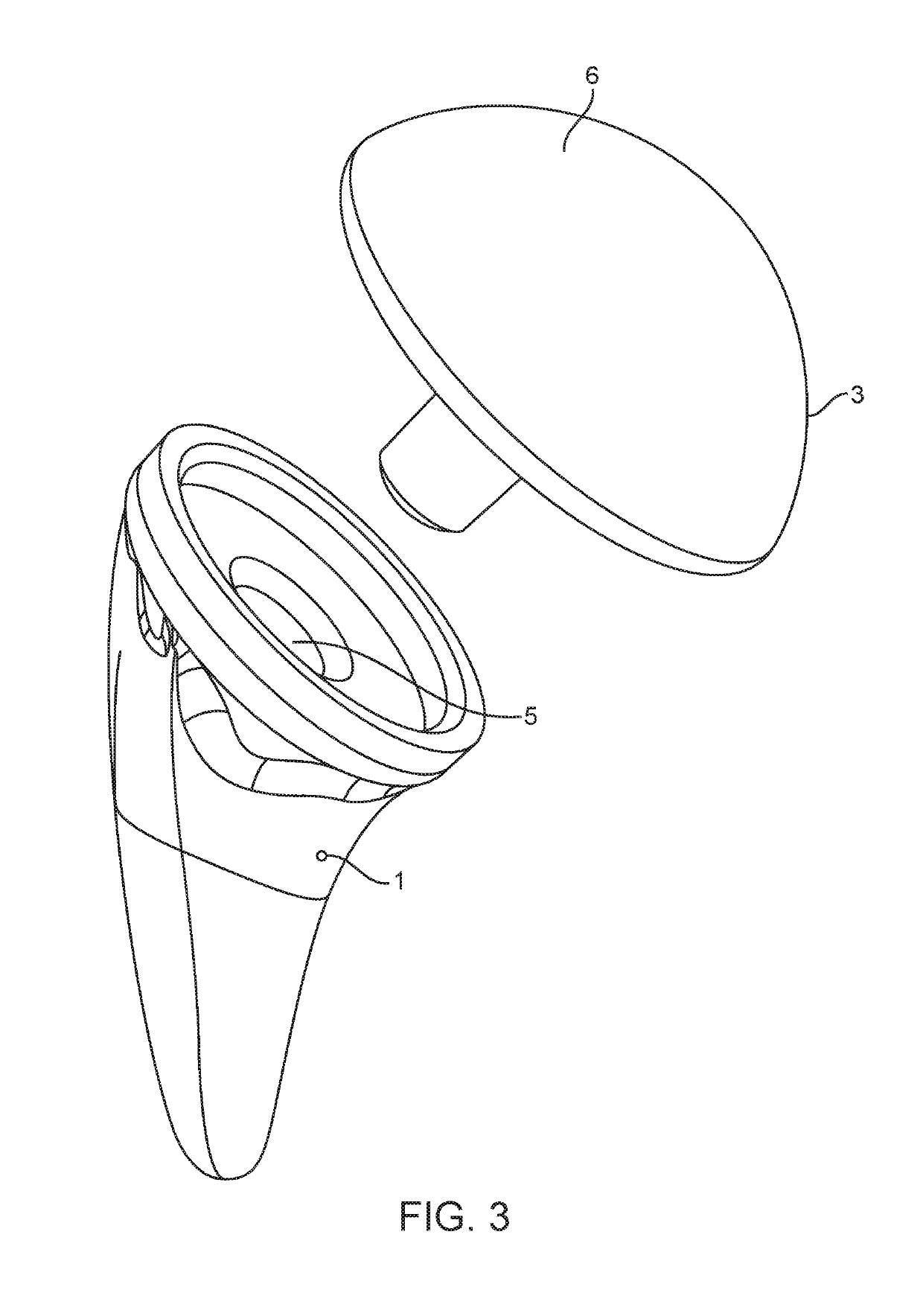Shoulder arthroplasty implant system
a technology for implants and shoulder joints, applied in the field of shoulder arthroplasty implant systems, can solve the problems of increased blood loss, increased complication rate, and difficulty in stem removal
- Summary
- Abstract
- Description
- Claims
- Application Information
AI Technical Summary
Benefits of technology
Problems solved by technology
Method used
Image
Examples
Embodiment Construction
[0060]Before the present subject matter is further described, it is to be understood that this subject matter described herein is not limited to particular embodiments described, as such may of course vary. It is also to be understood that the terminology used herein is for the purpose of describing particular embodiments only, and is not intended to be limiting. Unless defined otherwise, all technical terms used herein have the same meaning as commonly understood by one skilled in the art to which this subject matter belongs.
[0061]Disclosed is a shoulder arthroplasty system that is optionally convertible in use between an anatomic and a reverse shoulder implantation configuration. The system includes a short stem prosthesis that may provide several advantages. In the reverse shoulder configuration, the system includes an articular surface cup arranged in an inlay configuration on a receptacle of the stem. This may provide for a much more compactly sized system with respect to an on...
PUM
 Login to View More
Login to View More Abstract
Description
Claims
Application Information
 Login to View More
Login to View More - R&D
- Intellectual Property
- Life Sciences
- Materials
- Tech Scout
- Unparalleled Data Quality
- Higher Quality Content
- 60% Fewer Hallucinations
Browse by: Latest US Patents, China's latest patents, Technical Efficacy Thesaurus, Application Domain, Technology Topic, Popular Technical Reports.
© 2025 PatSnap. All rights reserved.Legal|Privacy policy|Modern Slavery Act Transparency Statement|Sitemap|About US| Contact US: help@patsnap.com



